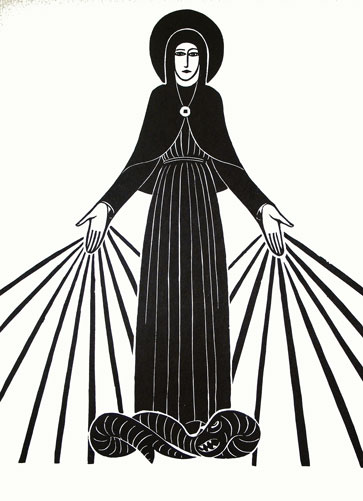From Jennifer Bastian, Gill Artwork Project Archivist:
I have recently begun photographing some of the wooden blocks from the Eric Gill Artwork Collection, which he carved and used to make woodcut prints. Aside from Gill’s mastery of line and composition, there is a less obvious level of technical craftsmanship that is visible when taking a look at the blocks. Each block must be carved carefully in relief, which means that parts of the wood are cut away below the surface of the block. Ink is then rolled onto the block with a brayer, and the portions of the surface that have not been carved away will ink the paper and create your image.
For this particular woodcut, Our Lady of Lourdes, Gill carved the block into five different pieces. This allows for the freedom to print in black as well as in full color. I have photographed the block altogether, as well as separated, for demonstrative purposes. How nice, to be able to see the actual blocks that an artist created their prints with!

Above is the block, with pieces connected. Note the small holes that would have allowed the block to be pinned into place for printing.
Here is the block, with pieces slightly separated.
Above, an example of an Our Lady of Lourdes print with black ink.
And here is an example showing the use of multiple colors of ink.
Images above courtesy of the Bridgeman Art Library.
Black and white print image from www.ericgill.com





simply breathtaking!